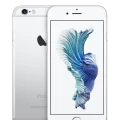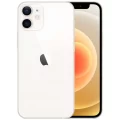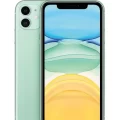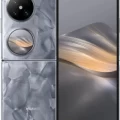- PRODUCTS
- Apple iPhone
- iPhone 6 Plus Price in Kenya
iPhone 6 Plus Price in Kenya
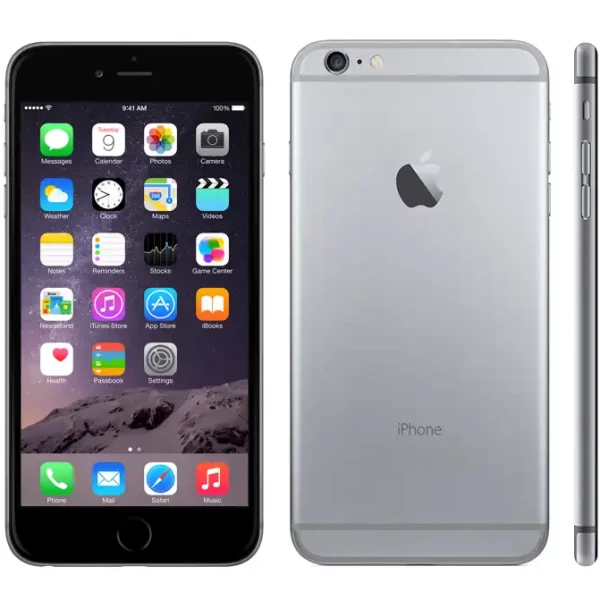

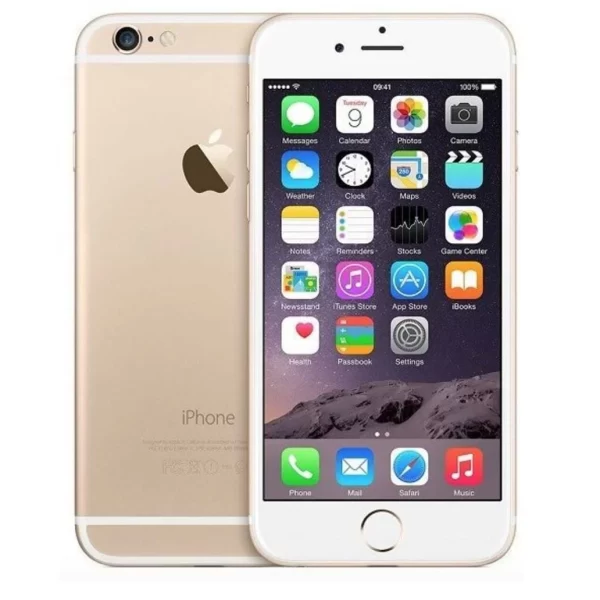
The iPhone 6 Plus, released alongside the standard iPhone 6 in 2014, marked a significant shift in Apple’s smartphone strategy as the company sought to cater to the growing demand for larger-screen devices in the Kenyan market. In this blog post, we’ll explore the various aspects of the iPhone 6 Plus, including its design, features, performance, and pricing in the Kenyan context.
Larger and More Immersive Display
One of the defining features of the iPhone 6 Plus was its larger 5.5-inch display, a significant increase from the 4.7-inch screen found on the standard iPhone 6. This larger display not only provided Kenyan users with a more immersive viewing experience but also made the device more suitable for tasks such as web browsing, media consumption, and productivity.
The iPhone 6 Plus featured a Retina HD display with a resolution of 1920 x 1080 pixels, resulting in a pixel density of 401 ppi. This high-quality display offered Kenyan consumers a sharp, vibrant, and detailed visual experience, with improved color accuracy and contrast compared to previous iPhone models.
Sleek and Premium Design
Like the standard iPhone 6, the iPhone 6 Plus featured an all-new aluminum unibody construction, which gave the device a premium and durable feel in the hand. However, the larger screen size of the iPhone 6 Plus resulted in a slightly thicker and heavier design, which some Kenyan users may have found less comfortable to hold and operate with one hand.
Despite its larger dimensions, the iPhone 6 Plus maintained the sleek and refined aesthetic that had become synonymous with Apple’s smartphone lineup. The device’s curved edges and slim profile contributed to its overall premium and modern appearance, making it an attractive option for Kenyan consumers seeking a high-end smartphone experience.
Improved Performance and Battery Life
Under the hood, the iPhone 6 Plus was powered by the same A8 processor found in the standard iPhone 6, delivering a significant performance boost over the previous-generation A7 chip. This improved processing power, combined with 1GB of RAM, ensured a smooth and responsive user experience for Kenyan consumers, whether they were multitasking, playing games, or running resource-intensive applications.
One of the key advantages of the iPhone 6 Plus over the standard iPhone 6 was its larger battery capacity. The iPhone 6 Plus featured a 2,915 mAh battery, which provided Kenyan users with significantly longer battery life compared to the 1,810 mAh battery in the iPhone 6. This improved battery life was particularly beneficial for Kenyan consumers who relied on their smartphones for extended periods, such as during long commutes or while traveling.
iOS 8 and the App Store Ecosystem
The iPhone 6 Plus shipped with iOS 8, which introduced a range of new features and improvements to Apple’s mobile operating system. Kenyan users were able to enjoy a more intuitive and customizable user interface, as well as enhanced productivity tools and integration with other Apple devices.
As with previous iPhone models, the iPhone 6 Plus benefited from the robust iOS ecosystem, providing access to a vast library of apps, games, and services through the App Store. This ecosystem continued to be a major selling point for Apple’s smartphones in the Kenyan market, as it offered a wide range of content and functionality to meet the diverse needs of Kenyan consumers.
Pricing and Availability in Kenya
When the iPhone 6 Plus was first introduced in Kenya, it was priced at a premium level compared to the standard iPhone 6 and previous iPhone models. The base model, with 16GB of storage and Wi-Fi + 4G LTE connectivity, was initially sold for around KES 75,000 (approximately $750 at the time), positioning it as a high-end smartphone option in the Kenyan market.
This pricing strategy was in line with Apple’s positioning of the iPhone 6 Plus as a more advanced and capable version of the company’s flagship device. The company aimed to cater to Kenyan consumers who were willing to pay a premium for the larger and higher-resolution display, the improved battery life, and the enhanced iOS 8 experience.
Adoption and Impact in the Kenyan Market
The iPhone 6 Plus quickly gained traction in the Kenyan market, appealing to a segment of consumers who valued the device’s larger screen size, improved performance, and enhanced battery life. The larger display, in particular, was well-received by Kenyan users, as it provided a more immersive and comfortable experience for activities such as web browsing, media consumption, and gaming.
The introduction of the iPhone 6 Plus also helped to solidify Apple’s position in the Kenyan smartphone landscape, as the company continued to offer a range of devices to cater to different consumer segments. The iPhone 6 Plus, with its premium features and pricing, complemented the more affordable iPhone 6, iPhone 5s, and iPhone 5c models, allowing Apple to address the diverse needs and budgets of Kenyan consumers.
Siri and its Kenyan Adoption
Like the standard iPhone 6, the iPhone 6 Plus featured Siri, Apple’s virtual assistant. However, the challenges faced by Kenyan users in terms of Siri’s understanding of local dialects, accents, and cultural nuances remained.
While Siri’s capabilities had improved since its introduction, the assistant still struggled to fully comprehend and respond to the unique linguistic and cultural characteristics of the Kenyan market. This limited the usefulness of Siri for many Kenyan iPhone 6 Plus owners, who often found themselves relying on more traditional methods of interacting with their devices.
Cellular Connectivity and 4G LTE
The iPhone 6 Plus was available in both Wi-Fi-only and Wi-Fi + 4G LTE configurations, allowing Kenyan consumers to choose the option that best suited their connectivity needs. The cellular-enabled models supported 4G LTE connectivity, which was an important feature for Kenyan users as the rollout of 4G networks by local telecommunications providers continued to expand.
The availability of 4G LTE on the iPhone 6 Plus allowed Kenyan users to enjoy faster data speeds and improved network performance, enabling them to browse the web, stream content, and stay connected while on the go.
Longevity and Continued Support
Despite its premium positioning, the iPhone 6 Plus continued to receive software updates and support from Apple for several years after its initial release. This longevity was a testament to the company’s commitment to providing a consistent and reliable user experience, even on its older smartphone models.
Kenyan consumers who purchased the iPhone 6 Plus were able to enjoy the latest iOS updates and security patches, ensuring that their devices remained up-to-date and secure over time. This level of ongoing support helped to extend the usable lifespan of the iPhone 6 Plus, making it a more attractive long-term investment for Kenyan buyers.
Conclusion
The iPhone 6 Plus was a significant addition to Apple’s smartphone lineup, offering Kenyan consumers a larger and more immersive display, improved performance, and enhanced battery life. With its sleek and premium design, the iPhone 6 Plus appealed to Kenyan users who were looking for a high-end smartphone experience with a larger screen and longer-lasting battery.
The device’s pricing strategy, which positioned it as a premium smartphone option, helped to solidify Apple’s position in the Kenyan smartphone landscape, complementing the more affordable iPhone 6, iPhone 5s, and iPhone 5c models and addressing the diverse needs and budgets of Kenyan consumers.
While the challenges faced by Siri in understanding local dialects and cultural nuances remained a limitation for Kenyan users, the iPhone 6 Plus continued to offer a compelling overall package, with its impressive display, powerful performance, and robust iOS ecosystem.
The longevity and ongoing support provided by Apple also helped to extend the usable lifespan of the iPhone 6 Plus, making it a more attractive long-term investment for Kenyan buyers. Overall, the iPhone 6 Plus played a significant role in expanding Apple’s presence in the Kenyan smartphone market, offering a premium and user-friendly experience to those willing to pay for it.
Specs
NETWORK
| Technology | GSM / CDMA / HSPA / EVDO / LTE |
LAUNCH
| Release Date | 2014, September 09. Released 2014, September 19 |
| Status | Discontinued |
BODY
| Dimensions | 158.1 x 77.8 x 7.1 mm (6.22 x 3.06 x 0.28 in) |
| Weight | 172 g (6.07 oz) |
| Build | Glass front (Corning-made glass), aluminum back, aluminum frame |
| SIM | Nano-SIM Apple Pay (Visa, MasterCard, AMEX certified) |
DISPLAY
| Type | IPS LCD |
| Size | 5.5 inches, 83.4 cm2 (~67.8% screen-to-body ratio) |
| Resolution | 1080 x 1920 pixels, 16:9 ratio (~401 ppi density) |
| Protection | Ion-strengthened glass, oleophobic coating |
PLATFORM
| OS | iOS 8, upgradable to iOS 12.5.6 |
| Chipset | Apple A8 (20 nm) |
| CPU | Dual-core 1.4 GHz Typhoon (ARM v8-based) |
| GPU | PowerVR GX6450 (quad-core graphics) |
MEMORY
| Card slot | No |
| Internal | 16GB 1GB RAM, 64GB 1GB RAM, 128GB 1GB RAM |
MAIN CAMERA
| Back | 8 MP, f/2.2, 29mm (standard), 1/3.0", 1.5µm, PDAF, OIS |
| Features | Dual-LED dual-tone flash, HDR |
| Video | 1080p@60fps, 720p@240fps |
SELFIE CAMERA
| Front | 1.2 MP, f/2.2, 31mm (standard) |
| Features | face detection, HDR, FaceTime over Wi-Fi or Cellular |
| Video | 720p@30fps |
SOUND
| Loudspeaker | Yes |
| 3.5mm jack | Yes 16-bit/44.1kHz audio |
COMMS
| WLAN | Wi-Fi 802.11 a/b/g/n/ac, dual-band, hotspot |
| Bluetooth | 4.0, A2DP, LE |
| Positioning | GPS, GLONASS |
| NFC | Yes (Apple Pay only) |
| Radio | No |
| USB | Lightning, USB 2.0 |
FEATURES
| Sensors | Fingerprint (front-mounted), accelerometer, gyro, proximity, compass, barometer |
BATTERY
| Type | Li-Po 2915 mAh, non-removable (11.1 Wh) |
MISC
| Models | A1522, A1524, iPhone7,1 |
| Colors | Space Gray, Silver, Gold |
Reviews
Disclaimer Note
Disclaimer: We don't guarantee that the information on our page is 100% correct.
